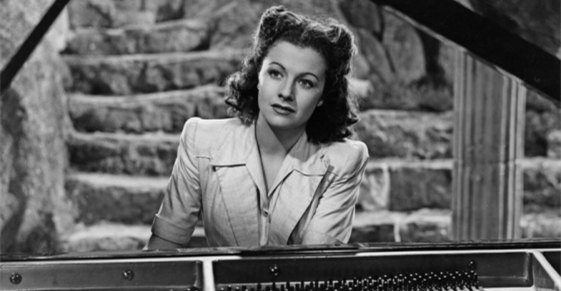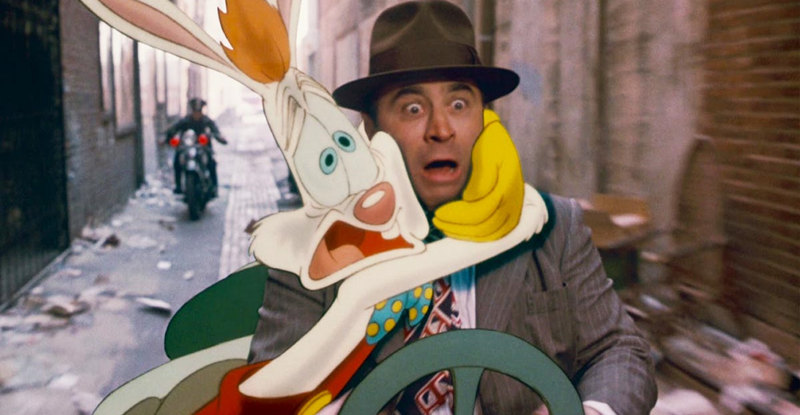Say it ain’t so, Joe. Er, Tom. Say you’re not a villain. I mean, not our Forrest Gump, not our castaway who was sleepless in Seattle, who was Big, who saved Private Ryan, who cracked the Da Vinci code, for crying out loud.
Fortunately, even when Tom Hanks is playing a bad guy, he’s a good guy. David Self’s screenplay for 2002’s “Road to Perdition” sees to that, a screenplay, I’ve read, that is far less violent than the graphic novel by Max Allan Collins and Richard Piers Rayner on which Self based the script. Hanks is still the “Angel of Death,” the number-one hit man for the Rooney gang, an affiliate of the Capone organization in 1931, but he is apparently not quite so brutal in this translation. In fact, he’s a straight-arrow family man, living in the suburbs with a beautiful wife and two young sons. He may be a cold-blooded murderer, but I guess it’s only a nine-to-five job.
The easy criticism of the film is that it romanticizes and even glorifies a ruthless killer. As though that were something new. As I’ve said, Hanks plays your average, ordinary Irish-Catholic family man who just happens to be a mob hit man. The thing is, that’s not the point of the story. It’s the man’s relationship with his son that forms the nucleus of the film.
It doesn’t pay to analyze the plot and characters too much or they begin sounding downright melodramatic. Chalk it up to the sure hand of director of Sam Mendes (“American Beauty”) that everything comes out as well as it does. What could have been simply another blustery gangster picture with maudlin overtones Mendes turns into a lyrical vision of love and loyalty and bonding, a poetic coming-of-age for a father and son.
Admittedly, the story lays it on pretty thick at the beginning and only exaggerates it further as it goes along. Hanks plays Mike Sullivan, a fellow viewed almost as a son by big-time gangster John Rooney (Paul Newman), who long ago took him in, somewhat in the manner of Tom Hagen in “The Godfather.” But Rooney’s got another son, a real son, Connor (Daniel Craig, whom I had quite forgotten was in the film), a hotheaded, somewhat in the manner of Sonny in, uh, “The Godfather” again. Do you sense a pattern here? Anyway, Connor gets the story’s ball rolling after an introductory sequence that establishes Rooney’s affection for Mike and Mike’s affection for both his primary and secondary families.
Connor, you see, is not only hotheaded but crooked, vicious, and stupid, as well. And, unfortunately (for everyone but the audience or we wouldn’t have a picture), Connor does something particularly stupid with Mike by his side, murdering a rival mobster and several of his henchmen with Mike’s help while Mike’s oldest son, Michael, Jr., age twelve, accidentally, surreptitiously, looks on. When Connor finds out that the boy has seen them, he thinks only to protect himself by attempting to wipe out the entire Sullivan family. Call it pent-up jealousy or whatever, he almost accomplishes the deed.
The rest of the film is an old-fashioned chase and revenge flick, complete with bank robberies, fast cars, and gun battles, with the added luxury of some serious character relationships blossoming at almost every turn. Should old-man Rooney support his designated adopted son, Michael Sullivan, so loyal and hardworking, or his own blood relative, Connor Rooney, a psychopathic nincompoop? Should Sullivan break his ties with his young son Michael, or might he find that being on the lam together will enable the two of them to bond like never before? Does “Perdition” refer only to the small town the Sullivans are heading toward or the road the older Sullivan has already taken, the road to hell from which he can never return, the road he has always wanted desperately to keep his sons from travelling?
Mendes guides his characters to Oscar-worthy performances. Hanks, the unlikeliest of heavies, actually works well as the aloof, reticent, soft-spoken, but cool and calculating hired gun, whom the story leads us to believe isn’t so evil after all because he only kills bad guys. One of the great joys of the film is watching his character’s relationship with his son unfold, a son he had not truly known until the advent of these tragic events. The veteran Newman, too, communicates an appropriate sense of anguish over his dilemma as a man facing the toughest choices of a long and tumultuous life. His is a complex and conflicted role, and Newman, as usual, is up to the challenge. Then there’s Tyler Hoechlin as Michael, Jr., holding his own against the illustrious older actors; Jennifer Jason Leigh and Liam Aiken as Sullivan’s doomed wife, Annie, and son, Peter; Stanley Tucci as Frank Nitti, Capone’s right-hand man; and Jude Law as Maguire, the relentless killer sent out after Sullivan and his son.
Moreover, Mendes, cinematographer Conrad Hall (who won an Oscar for his work), and composer Thomas Newman (in his sparely atmospheric, Oscar-nominated score) manage to make something eloquently imaginative out of an otherwise heavy-handed set of circumstances. Notice their use of film-noir contrasts in lightness and shadow and their expressive sense of dark imagery to convey the movie’s dusky, foreboding tone; their feel for the grit and gloom of a Depression Era Midwest; and the director’s insistence on quick, sudden violence made all the more intense coming from the encircling quiet. The movie forces us to recognize the inherent romanticism in desperate men and desperate situations; and the narrative demonstrates economy in the application of cinematic montage.
Even young Michael’s voice-over, an extension of the device the director used in “American Beauty,” proves effective: “When people ask me if he was a decent man, or if there was no good in him at all, I don’t answer. I just tell them, he was my father.”
Mendes and his associate filmmakers are able to transcend the story’s source material and create something more than the sum of its parts; namely, a gripping, touching, entertaining motion picture, which is about all one could ask.
Video:
There’s certainly nothing to fault about the video presentation; the dual-layer BD50, MPEG-4 encoded, 2.35:1 ratio transfer is first-rate all the way. There is a natural film grain evident in the opening outdoor shots, which might make some viewers wish the video engineers had applied some small degree of filtering, but it gives the movie an appropriate film-like quality and provides texture to the people and objects on screen. Indoor shots have a cleaner, clearer, and more-processed look than the outdoor ones. The movie depicts the muted, Depression Era tones vividly, the images well delineated, with many of the scenes so deeply imbued with rich colors they appear almost three-dimensional in their realism. Beautiful golden-brown, gray, and white hues predominate, with an abundance of dark areas that nevertheless reveal good detail, thanks, perhaps to the well-judged black levels.
Audio:
The audio reproduction is equally up to the task in lossless DTS-HD Master Audio 5.1. We get rain, of course, and plenty of it in the front, rear, and side speakers, plus a pleasant musical bloom, machine guns rat-tat-tatting, bullets ricochetting, and the like all around the viewing area. But there are small, subtle touches, too, like doors closing behind us and the whacking of branches by the Sullivan car as it speeds too near a tree. The dynamic range is wide and punchy, as well as the frequency response, with sparkling highs and room-rattling lows. In other words, nothing but superior audiovisual qualities complement the movie.
Extras:
DreamWorks provide a healthy selection of extras on the Blu-ray disc, most of them carried over from the DVD, others new. The first extra is a new introduction to the film by director Sam Mendes, who tells us he was initially skeptical of the Blu-ray format but was won over when he looked at the results. Next up is the mandatory director’s commentary on the film, his comments straightforward, to the point, and entertaining in a purely informational sort of way. After that a new, twenty-six-minute documentary on the film’s cinematographer, “A Cinematic Life: The Art and Influence of Conrad Hall,” in high definition; followed by “The Library: A Further Exploration of the World of Road to Perdition,” a lengthy examination of the film using stills, text, picture-in-picture, inserts, and similar devices. Then, we get a twenty-five-minute HBO documentary, “The Making of Road to Perdition,” which includes the usual behind-the-scenes shots and interviews; eleven deleted scenes, about twenty-two minutes’ worth, that the user can play with or without the director’s commentary. This is one of the few instances where the deleted scenes are actually of interest, the Capone scene in particular.
The bonus package concludes with theatrical trailer, in high def; twenty-four scene selections, and bookmarks; English, French, and Spanish spoken languages; English, French, and Spanish subtitles; and English captions for the hearing impaired.
Parting Thoughts:
I enjoyed “The Road to Perdition,” but its goings-on are probably too much out there in pulp-fiction land to call it a truly great film. The movie’s plot seems too contrived, the characters too sentimental, the performances too convenient, and the ironies too easy for it to strike every viewer as high art.
Yet, as I’ve said, it all works surprisingly well for so simple a story, and it involves the audience in its action from beginning to end. Almost as important, the Blu-ray’s high definition picture and sound make a good thing better.


